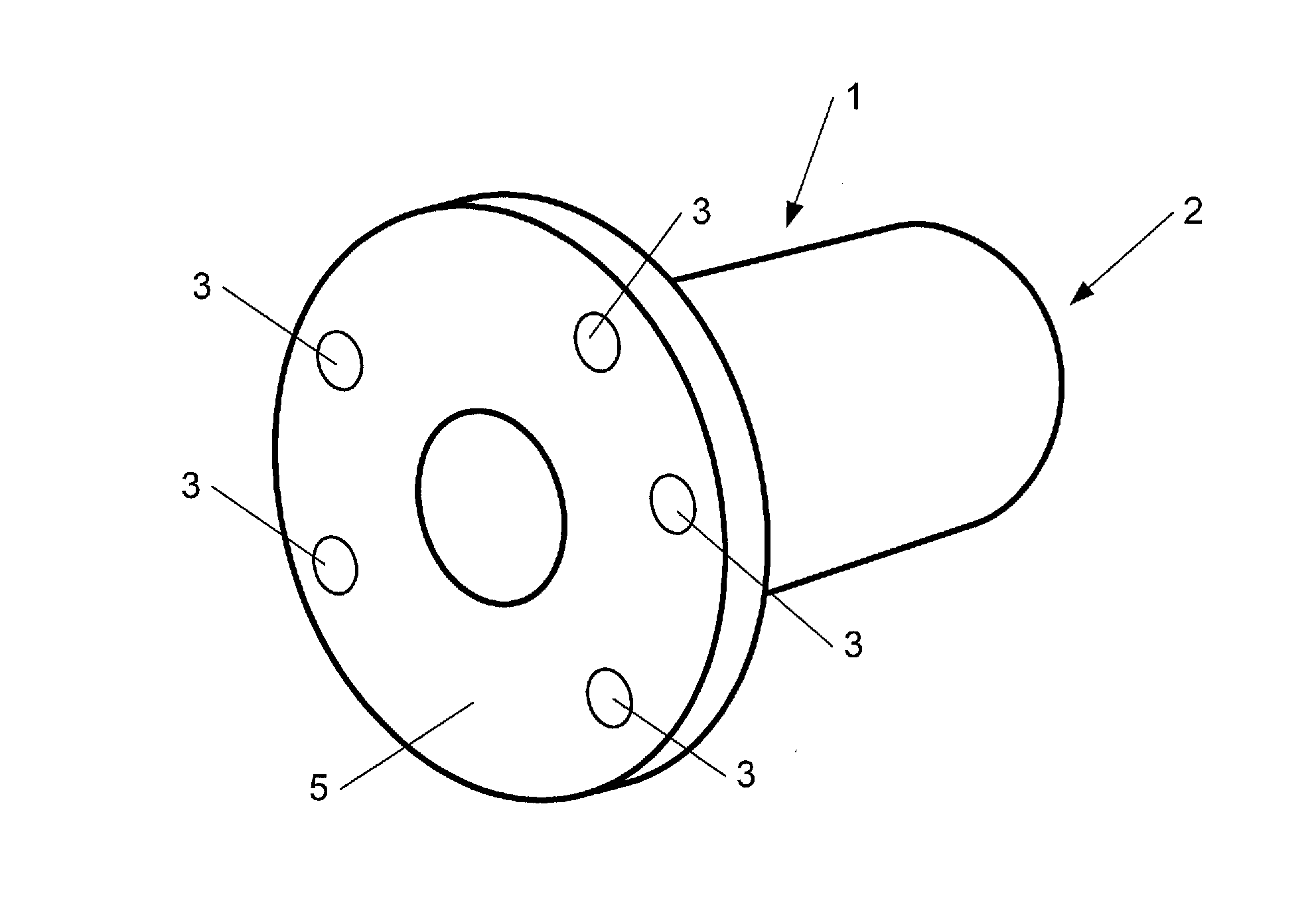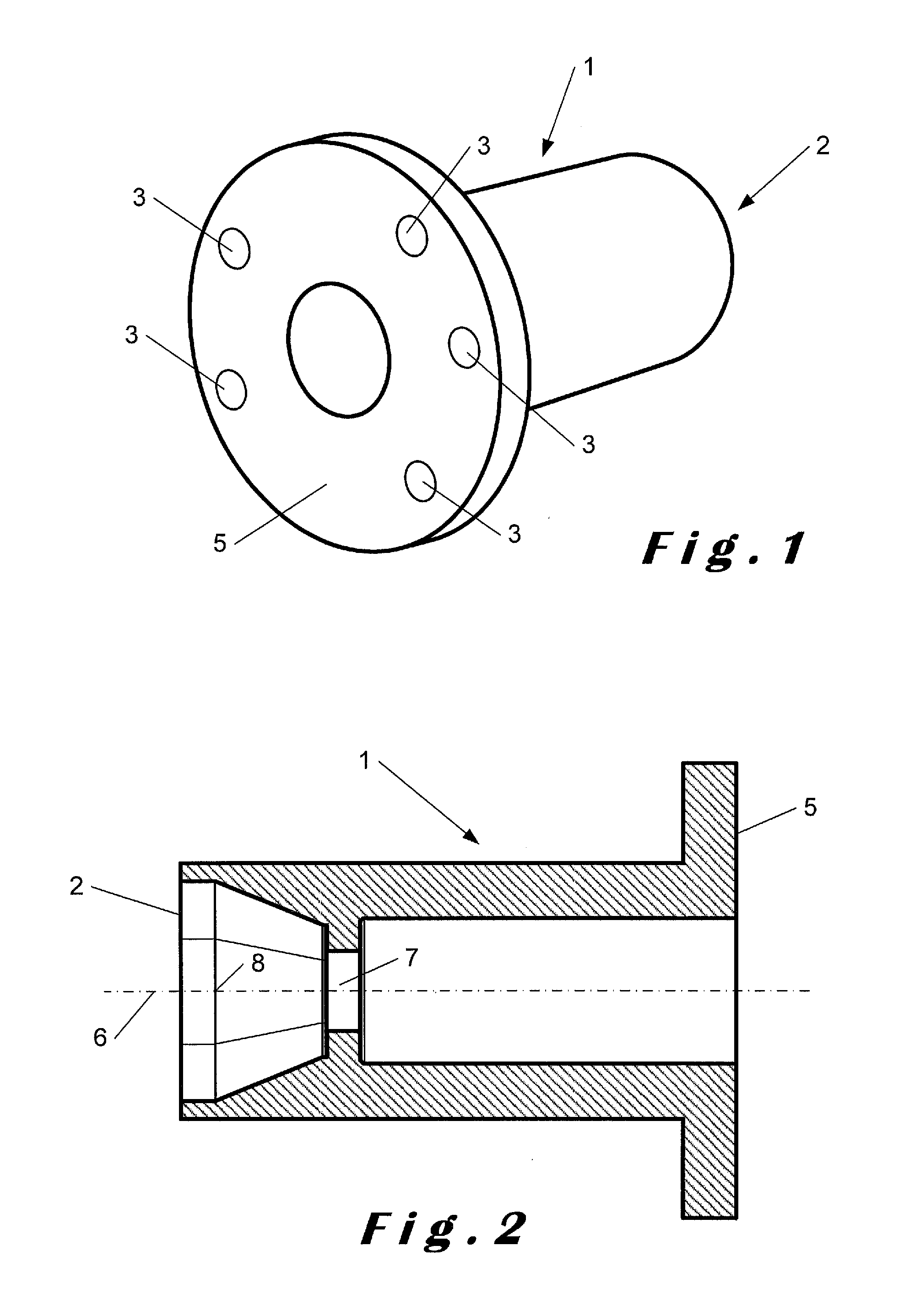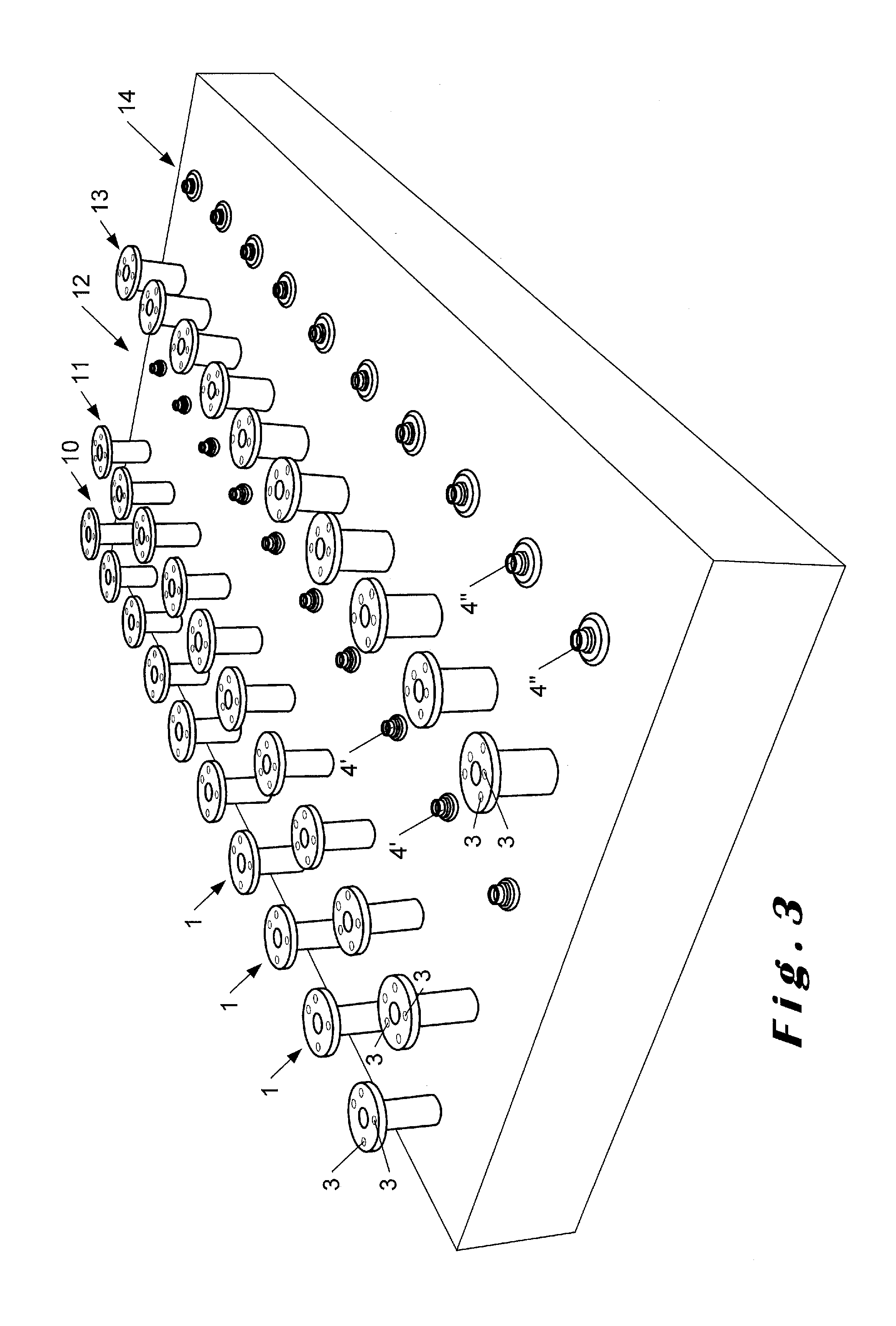Precalibrated dental implant aid
a technology of dental implants and aids, applied in dentistry, dental prosthetics, medical science, etc., can solve the problems of insufficient accuracy of most current intra-oral scanners, difficult to measure with the required accuracy, and many versions of rather complex geometric designs of implant heads, etc., to reduce the time for completion, speed and simple technique, the effect of simplifying the process
- Summary
- Abstract
- Description
- Claims
- Application Information
AI Technical Summary
Benefits of technology
Problems solved by technology
Method used
Image
Examples
examples
The Pre-Calibration Step:
[0139]In a plate a matrix of 5×10 dental implant root connection part analogues are placed, as shown in FIG. 3. The connection parts may all be the same, but preferably differ in order to reflect a portion of the wide variety of connections for implant roots, their analogues, and for their corresponding abutments. For each position, the type of connection, as well as the axis of orientation of the implant root, are well defined relative to the plate.
[0140]To each one of the implant root connection parts is properly connected a corresponding visualiser, as shown in FIG. 3 for three rows. All the visualisers in this example have a cylindrical shape with a flat head which extends cylindrically beyond the size of the cylindrical shape of the visualiser. Such a visualiser is shown in more detail in FIGS. 1 and 2. On the flat head of each visualiser are subsequently placed the markers. The markers may form the same pattern for implant connection parts which are th...
PUM
 Login to View More
Login to View More Abstract
Description
Claims
Application Information
 Login to View More
Login to View More - R&D
- Intellectual Property
- Life Sciences
- Materials
- Tech Scout
- Unparalleled Data Quality
- Higher Quality Content
- 60% Fewer Hallucinations
Browse by: Latest US Patents, China's latest patents, Technical Efficacy Thesaurus, Application Domain, Technology Topic, Popular Technical Reports.
© 2025 PatSnap. All rights reserved.Legal|Privacy policy|Modern Slavery Act Transparency Statement|Sitemap|About US| Contact US: help@patsnap.com



